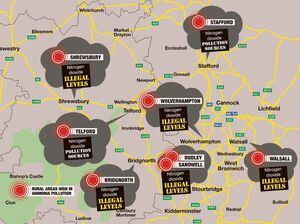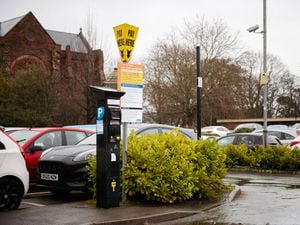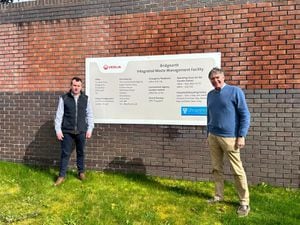Air pollution in Shrewsbury and Bridgnorth to be tackled with £50k funding
Shropshire Council has been granted more than £50,000 to improve the air quality in Shrewsbury and Bridgnorth.

This comes after the Shropshire Star revealed both towns were among the West Midlands pollution hotspots, having areas which exceeded national pollution limits.
The Government's Air Quality Grant of £53,300 from the Department for Environment, Food and Rural Affairs is set to be used for a project to develop an air pollution map and test low-cost zephyr air quality monitors.
The devices will be used to monitor nitrogen dioxide and particulates in both towns – tiny airborne liquid or solid particles which have been identified as being of particular concern due to their ability to penetrate deep into the lungs and blood streams unfiltered.
Findings will then be used to produce live air quality maps of Shrewsbury and Bridgnorth to highlight the specific areas of concern.
The council says it recognises the significant effect air pollution has on public health and is committed to meeting its statutory local air quality management duties under the Environment Act 1995.
See also:
Gwilym Butler, Shropshire Council’s cabinet member for communities, place planning and regulatory services, said: "We are delighted to have received DEFRA funding for our project.
"This work will not only help us towards fulfilling our statutory air quality management duties, but will also support the Shrewsbury Big Town Plan priorities for Movement and Place which include making pedestrians priority in the town centre, cycle and pedestrian network and measures to reduce through traffic.”
Nitrogen dioxide appears to be the biggest cause for concern in the built up areas, with hotspots in Telford, Shrewsbury and Bridgnorth. It is also prevalent along major roads, including the M6.
Pollution hotspots have proven to be a problem in Shropshire due to the historic shape of some of the towns, leading to air quality falling below the desired standards introduced in 2010.
Ammonia pollution, which is often caused by agricultural processes, tends to be highest in the rural areas.
Shropshire Council separately identified both Bridgnorth and Shrewsbury as having nitrogen dioxide levels exceeding national legal limits and declared air quality management areas to improve air quality. Three other areas were previously in breach of the limits, but are now compliant.





